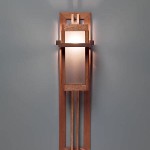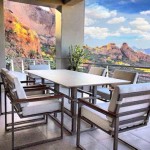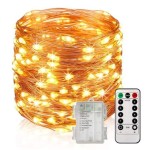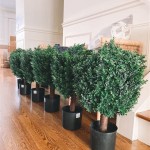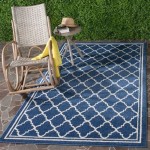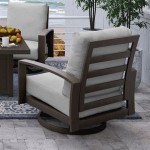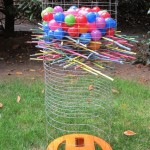Extra Large Resin Outdoor Planters: A Comprehensive Guide
Extra large resin outdoor planters have become increasingly popular for both residential and commercial landscaping purposes. Their durability, versatility, and aesthetic appeal make them a compelling alternative to traditional materials like concrete, terracotta, or wood. This article provides a comprehensive overview of extra large resin planters, exploring their benefits, characteristics, applications, and considerations for selection and maintenance. Understanding the properties and advantages of these planters is crucial for making informed decisions regarding outdoor space design and horticultural needs.
Benefits of Using Extra Large Resin Planters
Resin planters offer a range of advantages that contribute to their widespread adoption in various landscape settings. These benefits stem from the unique properties of the resin material itself and the manufacturing processes used to create these durable containers.
One of the most significant benefits is their
durability
. Unlike terracotta or ceramic planters, resin is highly resistant to cracking, chipping, and shattering. It can withstand extreme weather conditions, including freezing temperatures, intense sun, and heavy rain, without significant degradation. This resistance to the elements ensures a longer lifespan for the planter, reducing the need for frequent replacements and saving money in the long run. The material's inherent flexibility allows it to absorb impacts and stress that would easily damage more brittle materials.Another key advantage is their
lightweight nature
. Compared to concrete or stone planters of the same size, resin planters are significantly lighter. This makes them easier to move and reposition, which is particularly beneficial for large planters that would otherwise require heavy machinery to relocate. The reduced weight also simplifies installation and reduces the risk of structural damage to decks, patios, or balconies that may not be designed to support heavy loads. This portability offers greater flexibility in landscape design and allows for seasonal rearrangements of outdoor spaces.Furthermore, resin planters offer considerable
design flexibility
. They can be molded into a wide variety of shapes, sizes, and textures, mimicking the appearance of natural materials like stone, wood, or terracotta. Manufacturers can create planters with intricate details and unique finishes, allowing customers to choose designs that complement their existing landscape architecture. Resin can also be colored to match specific aesthetic preferences, offering a wider range of options than traditional materials. This adaptability makes resin planters suitable for diverse architectural styles and landscape themes.Finally,
lower maintenance
is a significant advantage. Resin planters are typically easy to clean with soap and water, and they do not require sealing or painting. They are less susceptible to staining and fading than other materials, maintaining their appearance over time with minimal effort. Their resistance to moisture also prevents the growth of mold and mildew, which can be a problem with porous materials like terracotta. This low-maintenance characteristic makes resin planters a practical choice for both residential and commercial applications where time and resources for upkeep are limited.Characteristics and Types of Resin Used in Planters
The performance of a resin planter is largely determined by the type of resin used in its construction and the manufacturing process employed. Several different types of resin are commonly used, each with its own unique properties and advantages.
Polyethylene (PE)
is a widely used type of resin known for its excellent durability and resistance to chemicals and UV radiation. Polyethylene planters are typically lightweight and relatively inexpensive, making them a popular choice for large-scale applications. They are also recyclable, contributing to environmental sustainability. However, polyethylene planters may not offer the same level of aesthetic detail or texture as some other types of resin.Polypropylene (PP)
is another common type of resin that is similar to polyethylene but offers slightly higher heat resistance and rigidity. Polypropylene planters are also lightweight and durable, making them suitable for outdoor use. They are often used in applications where the planter will be exposed to high temperatures, such as near a barbecue or in direct sunlight. Like polyethylene, polypropylene is recyclable.Fiberglass Reinforced Polymer (FRP)
is a composite material consisting of a resin matrix reinforced with glass fibers. FRP planters are exceptionally strong and durable, capable of withstanding heavy loads and extreme weather conditions. They can be molded into complex shapes and textures, offering a high degree of design flexibility. FRP planters are often used in commercial applications where durability and aesthetic appeal are paramount. While more expensive than polyethylene or polypropylene planters, FRP planters offer superior performance and longevity.Linear Low-Density Polyethylene (LLDPE)
offers enhanced flexibility and impact resistance compared to standard polyethylene. This makes LLDPE planters particularly well-suited for environments where there is a risk of impact or accidental damage. They are also resistant to cracking and splitting, ensuring a longer lifespan. LLDPE planters are often used in public spaces or areas with high foot traffic.The manufacturing process also plays a crucial role in the quality and performance of resin planters.
Rotational molding
is a common technique used to create seamless, hollow planters with uniform wall thickness. This process ensures structural integrity and prevents weak spots that could lead to cracking or failure.Injection molding
is another widely used process that is well-suited for mass production of smaller planters with intricate details. The choice of manufacturing process depends on the size, shape, and complexity of the planter, as well as the desired production volume.Applications and Considerations for Selecting Extra Large Resin Planters
Extra large resin planters are suitable for a wide range of applications, from residential gardens and patios to commercial landscapes and public spaces. When selecting a resin planter, it is important to consider the specific requirements of the application, including the size and type of plants to be grown, the desired aesthetic, and the environmental conditions.
For
residential applications
, extra large resin planters can be used to create focal points in gardens, define outdoor living spaces, or add visual interest to patios and decks. They are particularly well-suited for growing large trees, shrubs, or ornamental grasses. When selecting a planter for residential use, consider the style of the home and the overall landscape design. Choose a design that complements the existing architecture and adds to the aesthetic appeal of the outdoor space.In
commercial landscapes
, extra large resin planters can be used to create welcoming entrances, define pedestrian walkways, or add greenery to otherwise barren areas. They are often used in shopping malls, office buildings, and hotels to enhance the overall ambiance and create a more inviting environment. For commercial applications, durability and low maintenance are particularly important considerations. Choose a planter that can withstand heavy use and exposure to the elements without requiring frequent repairs or replacements. Consider planters with built-in drainage systems to prevent waterlogging and ensure the health of the plants.For
public spaces
, extra large resin planters can be used to create green oases in urban environments, provide shade and shelter, or add visual interest to parks and plazas. They are often used in conjunction with seating areas and other amenities to create comfortable and inviting public spaces. When selecting a planter for public use, consider the safety and accessibility of the design. Choose a planter that is stable and secure, with no sharp edges or potential hazards. Ensure that the planter is accessible to people of all abilities, including those who use wheelchairs or other mobility devices.Beyond the application, several other factors play a vital role in the selection process.
Size
is a primary consideration. The planter should be large enough to accommodate the root system of the plants to be grown, allowing for adequate growth and development. Overcrowding the roots can lead to stunted growth and reduced plant health. Ensure that the planter has adequate drainage holes to prevent waterlogging, which can also damage plant roots.Drainage
is crucial. Proper drainage is essential for the health of plants. Most resin planters come with pre-drilled drainage holes, but it is important to ensure that these holes are adequate for the size of the planter and the type of plants being grown. Consider adding a layer of gravel or pebbles at the bottom of the planter to improve drainage.UV Resistance
is another important characteristic. Prolonged exposure to sunlight can cause some types of resin to fade or degrade over time. Choose a planter that is specifically designed to be UV resistant to ensure that it maintains its appearance and structural integrity over time.Weight capacity
should be considered, especially for large planters. Ensure that the planter is strong enough to support the weight of the soil, plants, and water without cracking or collapsing. Consider adding internal supports or reinforcement if necessary.Finally,
cost
will always play a role. Resin planters vary widely in price, depending on the size, material, design, and manufacturer. It is important to balance the cost of the planter with its quality and durability to ensure that it provides good value for money.
Southern Patio Willow Large 22 In X 14 5 55 Qt Chalk Colored Resin Composite Outdoor Planter Cmx 088752 The Home

Extra Large Lightweight Planters Where To Get Them Benefits They Offer Terracast Products

Southern Patio Willow Large 22 In X 14 5 55 Qt Chalk Colored Resin Composite Outdoor Planter Cmx 088752 The Home

Southern Patio 15 9 In Blue Lake Large Gray High Density Resin Planter D X 12 5 H With Drainage Hole Hdr 021094 The Home

Large Outdoor Planters At Wholesale Prices Newpro Containers

Large Commercial Planters Terracast Products

Osaka Extra Large Commercial Grade Outdoor Planters Concrete

Cheap Extra Large Outdoor Planters Happy Nester

Allen Roth 20 35 In W X 16 73 H Brushed Slate Resin Traditional Indoor Outdoor Planter The Pots Planters Department At Lowes Com

Huntington Bowl Extra Large Outdoor Planter Kinsey Garden Decor

